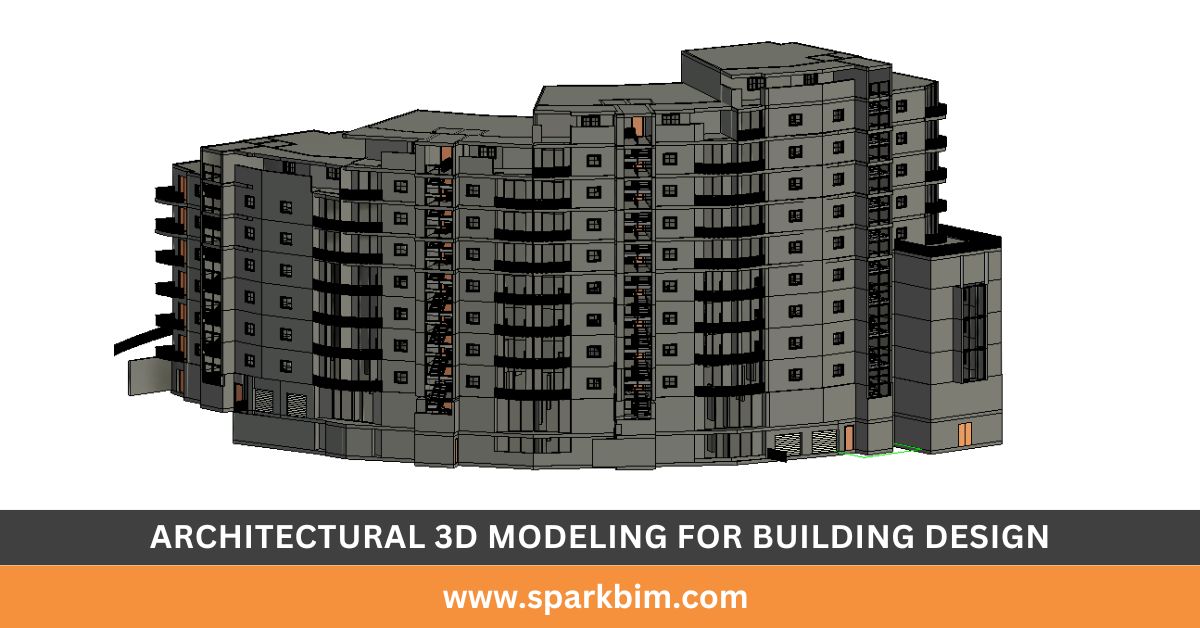Table of Contents
ToggleIn architecture and construction, technology plays a pivotal role in how buildings are designed, visualized, and constructed. Architectural 3D modeling is among the most transformative technologies.
This innovative process allows architects, designers, and engineers to create highly detailed, accurate, and dynamic visualizations of buildings before they are constructed, offering a wealth of benefits throughout the design, planning, and building phases.
This blog post will explore how Architectural 3D Modeling improves building design, providing better visualization, improved accuracy, streamlined communication, and increased efficiency throughout the design and construction process.
What is Architectural 3D Modeling
Architectural 3D modeling is the process of creating three-dimensional representations of buildings and structures using specialized software.
These models provide a virtual representation of the building’s design, including its dimensions, materials, and intricate details such as doors, windows, and finishes.
Unlike traditional 2D blueprints or sketches, 3D models allow architects and designers to view a project from all angles, helping them better understand spatial relationships, proportions, and design elements.
The use of 3D modeling allows for more comprehensive design analysis, real-time changes, and enhanced collaboration among all stakeholders involved in the project.
Key Benefits of Architectural 3D Modeling
1. Improves Visualization and Realistic Design
One of the most significant benefits is that architectural 3D modeling improves building design and visualization. In traditional design methods, architects and clients often rely on 2D drawings and blueprints, which can be challenging to interpret and visualize in three dimensions.
With 3D modeling, the building design comes to life, allowing all stakeholders to see the project from every angle and perspective. This realistic representation provides a more intuitive understanding of how the final building will look and feel, making it easier for clients, contractors, and engineers to assess the design.
For Example, architectural 3D models allow users to view interior spaces and exterior facades in detail. They can even simulate lighting and shadow effects to demonstrate how the building will look under different lighting conditions throughout the day. This kind of visualization is invaluable for making design decisions, choosing materials, and fine-tuning aesthetics.
2. Improved Accuracy and Precision
Accuracy is essential in building design. Architectural 3D modeling improves Building Design and ensures every element of the building is accurately represented in terms of dimensions, scale, and proportions.
The 3D model can also be directly linked to other data sources, such as building codes, material specifications, and structural requirements.
With 3D modeling, architects can ensure that every aspect of the building is properly sized and aligned. The software often includes tools for measuring distances, angles, and elevations, which significantly reduces the chances of errors and omissions.
This precision is particularly important when coordinating complex systems, such as electrical, plumbing, and HVAC installations, which require exact spatial planning.
Additionally, as the design evolves, changes can be implemented in real-time, ensuring that the final design is consistent and accurate. This reduces the likelihood of costly errors or modifications during the construction phase.
3. Faster and More Efficient Design Process
Architectural 3D modeling streamlines the design process, leading to faster and more efficient project development. Traditional design methods often involve multiple rounds of revisions, time-consuming hand-drawing of plans, and manual updates to reflect changes.
In contrast, 3D modeling allows architects to modify and update the model quickly, eliminating the need for repeated revisions. As changes are made, the model automatically adjusts, ensuring consistency across all parts of the design. This capability significantly accelerates the overall design process.
Moreover, 3D modeling software can integrate with other tools and technologies, such as Building Information Modeling (BIM), which further enhances workflow efficiency.
With BIM, architects can collaborate with engineers and contractors in real-time, sharing and coordinating design updates, material specifications, and structural details.
Also Read, Scan to CAD Services for Land Surveyors
4. Better Communication and Collaboration
Communication is crucial to the success of any building project. Architectural 3D modeling improves communication between architects, clients, contractors, and other stakeholders by providing a clear, detailed visual representation of the project.
With 3D models, designers can present ideas to clients and stakeholders engagingly and interactively, helping them understand the design concept better. This improves client satisfaction and reduces the likelihood of misunderstandings or misinterpretations.
Additionally, 3D models serve as a collaborative platform for multidisciplinary teams. Engineers, contractors, and designers can all access the same model, allowing them to coordinate their efforts more effectively.
This collaborative approach helps identify potential issues early in the design process, reducing the risk of conflicts during construction.
5. Virtual Walkthroughs and Simulations
One of the most powerful features of architectural 3D modeling is the ability to conduct virtual walkthroughs and simulations.
With a 3D model, designers can navigate through the building as if they were physically inside it. This allows architects, clients, and other stakeholders to experience the space in a more immersive way than traditional methods could offer.
Virtual walkthroughs are particularly useful for visualizing complex or large-scale projects. For instance, clients can explore the building’s layout, view specific rooms, and assess flow and functionality. This is especially helpful in commercial spaces, such as offices or retail locations, where understanding how people will interact with the space is crucial.
Additionally, architectural 3D models can simulate various environmental factors, such as light, shadows, and weather conditions. These simulations help evaluate how the building will perform under different circumstances, allowing designers to make informed decisions about materials, finishes, and energy efficiency.
6. Cost Estimation and Budget Control
Accurate cost estimation is vital for any construction project. Architectural 3D modeling can help control project budgets by providing precise measurements and quantities of materials needed for construction.
The model can automatically generate a Bill of Materials (BOM), which details the materials required for the project, along with their quantities and costs.
Having this level of detail early in the design process enables architects and contractors to estimate costs more accurately, reducing the likelihood of budget overruns. Moreover, 3D modeling can help identify cost-saving opportunities, such as using alternative materials or adjusting designs to optimize resource usage.
The integration of 3D models with BIM can further enhance cost control by providing real-time updates on material costs, labor expenses, and other project-related expenditures.
7. Sustainability and Energy Efficiency
Sustainability is a growing concern in modern architecture. Architectural 3D modeling enables designers to assess a building’s environmental impact and energy efficiency early in the design phase.
The model can simulate how the building will interact with natural light, wind, and other environmental factors, helping architects design spaces that reduce energy consumption.
Energy simulations can be integrated into the 3D model to evaluate the building’s heating, cooling, and ventilation requirements. By optimizing these systems, architects can design buildings that are more energy-efficient and environmentally friendly.
Additionally, architectural 3D modeling allows for better material selection, ensuring that the materials used in the construction are sustainable and contribute to the overall energy efficiency of the building.
Architectural 3D Modeling in Practice: Real-World Applications
Architectural 3D modeling is not just a theoretical concept – it is used extensively in real-world projects across the globe. Some of the most notable applications include:
Residential Design
Homebuilders and designers use 3D modeling to create custom homes that meet clients’ needs and preferences. The technology allows for detailed interior and exterior design, ensuring that every element fits perfectly within the overall plan.
Commercial Projects
Large-scale commercial projects, such as office buildings, shopping centers, and hotels, benefit greatly from 3D modeling. The ability to visualize complex layouts, evaluate space utilization, and simulate foot traffic patterns ensures that the final design aligns with the client’s vision.
Renovations and Retrofits
3D modeling is invaluable for renovations or retrofitting existing structures. It allows designers to visualize how new elements will integrate with the existing building, ensuring a seamless and functional design.
Urban Planning and Public Infrastructure
Architects and urban planners use 3D modeling for city planning, infrastructure development, and public works projects. The models help evaluate the impact of new structures on the surrounding environment and urban layout.
Conclusion
Architectural 3D modeling improves building design process, and it offers numerous benefits that enhance visualization, accuracy, communication, and efficiency.
From improving design clarity to streamlining collaboration and reducing costs, 3D modeling has become an indispensable tool in modern architecture and construction.
As technology continues to evolve, the potential applications of 3D modeling will only expand, further enhancing the way we design and construct buildings. Whether for residential homes, commercial projects, or large-scale infrastructure, architectural 3D modeling is shaping the future of building design, one model at a time.


